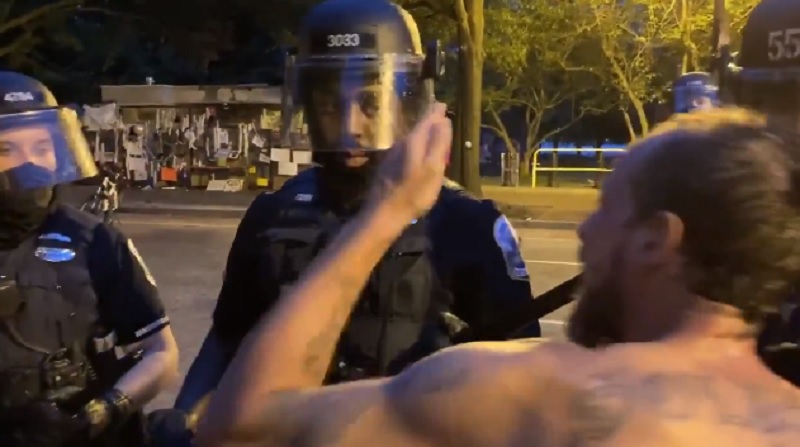
The statistics on police use of force cannot be repeated too often. With about 800,000 law enforcement officers of various stripes and duties making more than a million citizen contacts every week, the frequency of using force to make arrests and intervening in crime is remarkably low. The most severe outcome of lethal force occurs in 0.0015% of all face-to-face contacts initiated by police. Most citizen contacts are initiated by citizens themselves and are not reflected in the numbers related here.
Even more notable is that small percentage in light of the risk and opportunities that police officers routinely face where deadly force would be legally, tactically, and morally justifiable. Both this writer’s research and a study published in the FBI Law Enforcement Bulletin showed that in any given two-year period of service, 70-80% of police officers will be faced with a deadly force decision. The vast majority of the time the situation is resolved without a resulting fatality of the offender, but sometimes with the result of an officer’s death due to their reluctance to take another human life.
Various theories attempt to explain the hesitation to use deadly force. Military researchers determined that for most people the taking of human life, even that of an enemy, is repugnant. Soldiers across history, since the dawn of firearms that created distance in battle, have been known to miss their human targets intentionally or unintentionally. In the days of execution by firing squad, it was common practice to have only one rifle loaded with a live round so that none of the execution squad would know if they were the killer. Police marksmanship training is designed to develop accurate shooting. It is not designed to remove the humanity from the decision to use deadly force.
Others recognize that even in moments of terror a police officer will consider the legal and social ramifications of the use of deadly force. The emphasis on de-escalation and negation, while admirable, can lead an officer to hesitate when they should stop the threat immediately. To some degree, the acceptance of officer injury and violence against police may be a factor in an officer’s decision to continue to operate under a deadly threat rather than countering it with legal and lethal force.
Another theory is that the ubiquitous presence of body-worn cameras and bystander videoing reduces an officer’s tendency to use physical coercion including deadly force. Much to the dismay of critics, several research efforts on the effects of body-worn cameras show no less pro-active police activity among wearers compared to non-wearers, and no revelation of widespread abuse of force. The majority of police officers consider the cameras their friend and continue to operate professionally and in accordance with the law just as they did before.
One problem with documenting how successful police officers are at avoiding force and using de-escalation techniques that have been long developed as tried and true is that the statistics most people look to are those that document force, not the lack thereof. As they say, it is hard to prove a negative. When the critics shout about how many persons are killed by police, it is hard to respond with a statistic about how many could have been but were not. Success is not measured. There are efforts to establish a national database to get a more accurate whole picture, but those efforts are in their infancy.
Other important studies refute the worn concept that police officers are motivated by race or other individual characteristic (i.e. “profiling”) when using deadly force. The use of deadly force is only justified by the subject’s behavior. Racial and gender disparities exist because of other social factors which result in the over-representation of some populations in police contacts. The constant “race count” by the media is quick to point out white officers and black suspects seldom use any other descriptors if the officer is not white or the suspect is not black.
The use of the Taser to reduce other types of force options has been statistically proven as beneficial. Lacking this tool, officers must choose another level of compliance that is more likely to cause injury to the suspect as well as to the officer.
A Phoenix study developed a reality that is surprising in that their findings on officer use of force indicated that the number of officers present is not a guarantee of a different outcome. Officers are often criticized for not waiting for backup, but having additional officers is no guarantee that the suspect will comply, even if there were time for additional help to arrive.
A study published by the Office of Justice Statistics is a result of thousands of interviews with citizens contacted by police. About 1% of respondents said that the officer used or even threatened force. Fewer than one in five actual custodial arrests involved the use of force to gain compliance of an arrestee.
It is easy to make allegations that law enforcement officers are brutal, but the facts show otherwise. They are quite human.